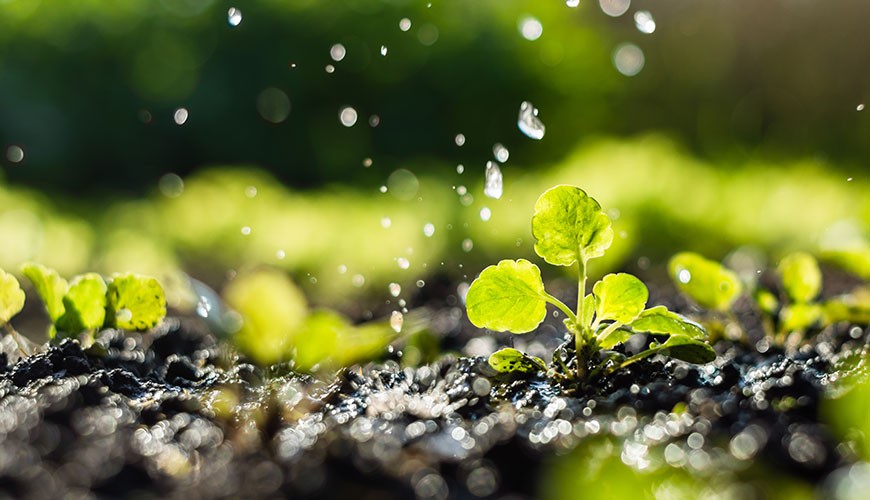Which factors affect plant growth and bloom?
 05 lis
05 lis Growing crops that thrive can be quite challenging, as there are 6 factors that affect the growth and bloom of your produce: nutrition, water supply, light intensity, oxygen and CO2. Continue reading, as we will explain their influence in more detail.
Growth explained
Let’s start by exploring the definition of ‘growth’. As your crop grows, it increases in size, due to the development of new cells and the expansion of existing ones. Plants grow when their photosynthesis exceeds their breathing. Photosynthesis is the plant’s chlorophyll process, in which it uses light energy to convert carbon dioxide into carbohydrates. The plant then burns these sugars when it breathes. The energy that is released enables the plant to grow.
The growth factors
Optimal growth requires the proportionate enhancement of the 6 factors mentioned above. Should one of these factors be less than optimal, than the plant’s growth could be hindered.
- Water supply: water uptake is vital to ensure maximum growth. After all, the plant absorbs nutrients through its roots, in the form of moisture. The more roots, the higher the nutrient uptake. Therefore, make sure you maintain stable pH-levels to prevent damage to the roots. When your plant lowers its head, it might be due to problems with the water supply.
- Nutrition: most of your crop’s building blocks are present in the atmosphere. Fertilisation only affects growth by about 6 per cent. As such, do not use more fertiliser than necessary, as this could hamper growth.
- Light intensity: plants grow by burning glucose. These sugars are the product of light energy (the photosynthetic process). Hence, a plant needs sufficient light. Root growth especially is hampered by light deficiency, hindering the plant’s nutrient uptake.
- Oxygen and CO2: plants needoxygen to breathe.Overwatering will flush out the oxygen from the soil, leading to root rot. In addition, plants need CO2 to produce glucose, but there is plenty of that in the atmosphere.
- Temperature: make sure the soil temperature is about 20°C. Temperatures greatly affect growth rate. Too high (above 30°C) and photosynthesis will decrease. Too low and growth, fruit formation and flowering will slow down.
- Air humidity: when humidity is too low or too high, it can hinder crop growth. Too high and it will hamper the plant´s ability to vaporise water through its leaves, resulting in decreased absorption of water and nutrients through the roots. It will also increase the chance of fungi taking hold. When humidity is too low, your plant may start showing signs of burning, resulting in a loss of chlorophyll.
Need advice?
Have you got any more questions about plant growth? Then feel free to contact our expert employees, as they look forward to helping you out with information about boosting your plant’s growth and bloom.



